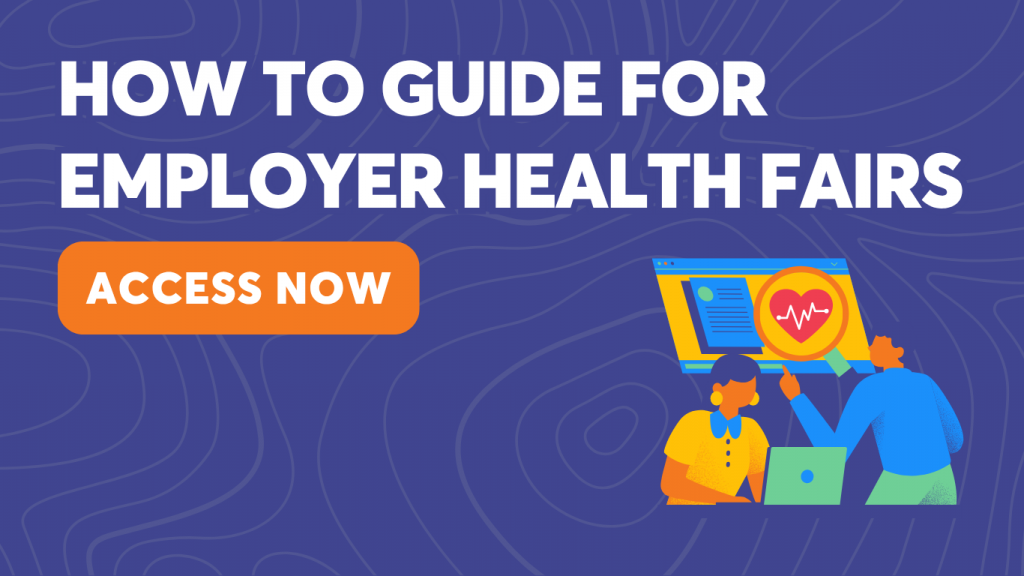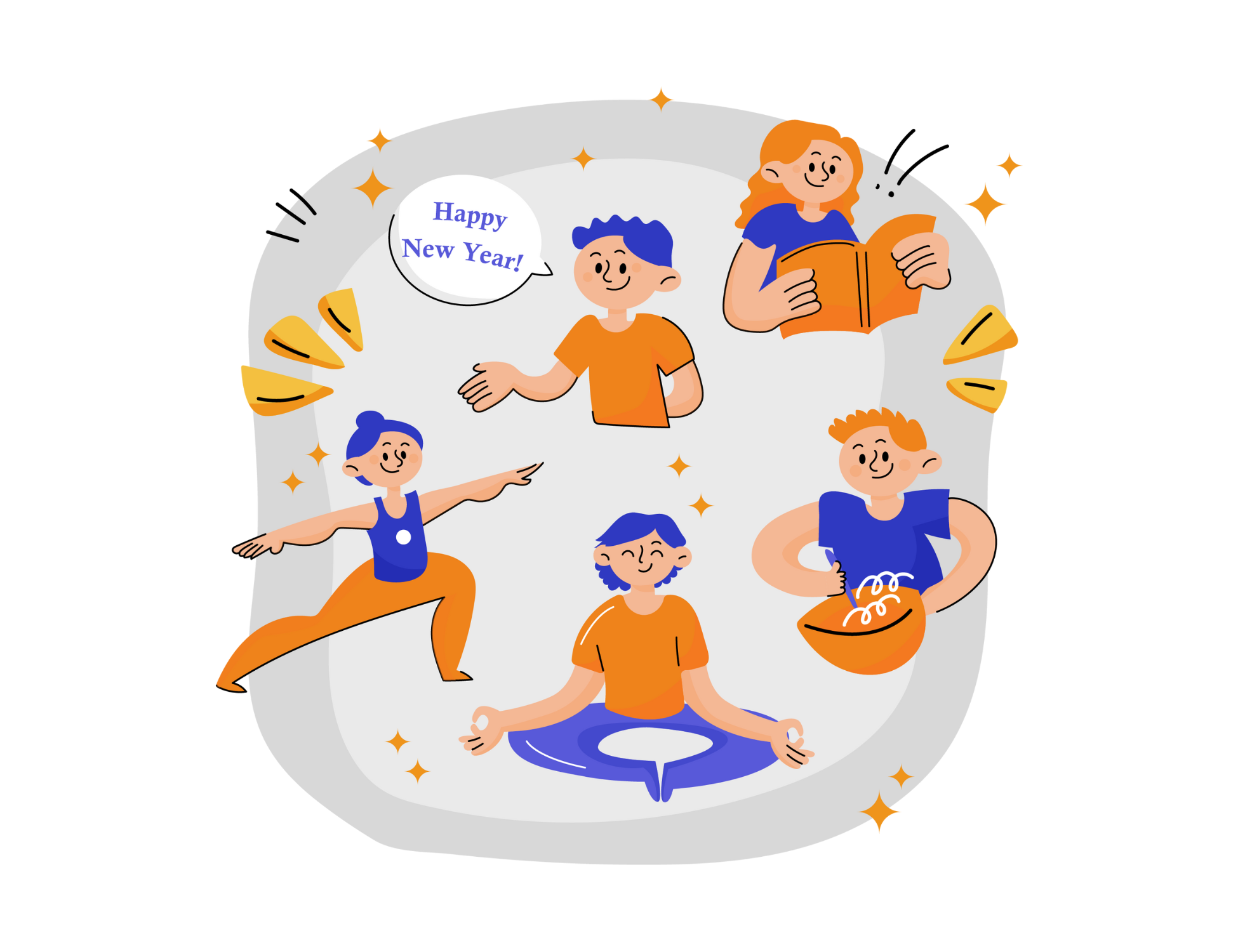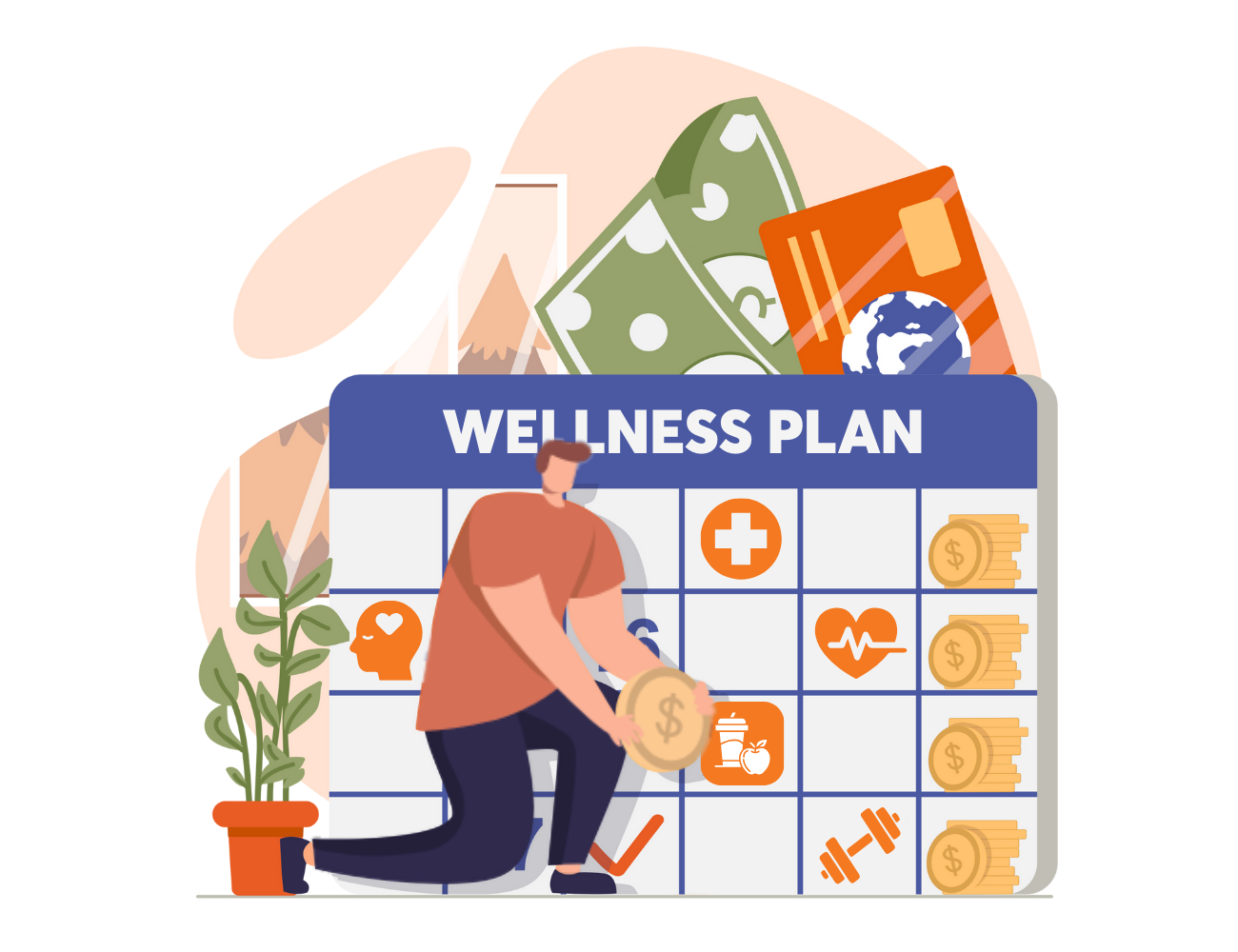Short on time? Here are the key takeaways:
- Virtual health fairs promote inclusive employee wellness by removing geographic and logistical barriers in hybrid and remote work environments.
- A virtual health fair should offer a diverse mix of educational sessions and content paired with engaging experiences that support holistic well-being.
- Technology plays a critical role in delivering a seamless virtual experience and using familiar platforms like Zoom or Slack can help drive attendance and engagement.
- Incentives, interactive activities, and culture-driven programming help boost employee participation, build community, and ensure that the event resonates with your workforce.
One way for an organization to improve employee well-being is to provide an opportunity for staff to learn about existing benefits and interact with a variety of wellness experts in a single location or on a single occasion. These events, often referred to as health fairs, have traditionally been held in physical spaces like a company’s headquarters. With 65% of organizations now offering hybrid or remote work arrangements, virtual health fairs are growing in popularity, offering more widespread opportunities to educate employees on workplace wellness and promote healthier living.

While virtual health fairs offer greater flexibility and reach, they also come with unique challenges like the added complexity of coordinating multiple vendors, technologies, and time zones. However, with thoughtful planning, the right mix of experiences and educational sessions, and a clear engagement strategy, virtual health fairs can be just as impactful as in-person events. Below are the primary reasons to consider hosting a virtual health fair, along with practical tips to help ensure it is engaging, inclusive, and effective.
Common Reasons for Hosting a Virtual Health Fair
There are various reasons to choose to host a virtual health fair over an in-person event. The top three are:
1. Remote or Hybrid Workforce
With a vast majority of the workforce working remotely or returning to the office environment on a hybrid or flexible schedule, offering a virtual health fair allows everyone to participate, regardless of where they work. Whether attendees are fully remote, traveling, or simply not in the office that day, a virtual format removes location barriers and improves accessibility.
2. Multiple Office Locations
Coordinating multiple on-site fairs can be costly and labor-intensive, requiring duplication of vendors, materials, and staffing. Companies with more than one office location can streamline logistics while maximizing reach and return on investment with a single virtual health fair.
3. Event Variety and Customization
Virtual events open the door to a broader range of wellness vendors and experts, including those who may not be available locally or who specialize in niche areas of health and well-being. Whether it’s a chef hosting a healthy cooking demo from another city or a mental health expert offering a workshop from across the country, virtual health fairs eliminate physical limitations and encourage creative programming.
12 Tips for Virtual Health Fair Success
The following tips will help ensure your virtual health fair is well-organized, inclusive, and impactful. From leveraging the right technology to fostering connections and promoting long-term wellness, these strategies are designed to help your event resonate with employees and deliver lasting value.
1. Streamline Logistics with the Right Tools
Whether you plan your virtual health fair internally or bring in a partner to help, seamless technology and accessibility are essential for a smooth event. Leverage familiar tools like Zoom, Microsoft Teams, or Slack to create centralized hubs for live sessions, chat engagement, and event navigation. Alternatively, wellness vendors or platforms can manage scheduling, tech support, and programming, which can be especially helpful for large or distributed teams.
Pro Tip: Build the agenda into employee calendars with invites that include clickable links, session reminders, and auto-recordings for on-demand access.
2. Spotlight Benefits Providers
Traditionally, on-site health fairs offer employees a chance to meet with your company’s benefits providers face-to-face and learn more about their services. Virtually, you can replicate the experience by inviting benefits providers to host short webinars, live Q&A sessions, or one-on-one virtual office hours. These sessions can help employees better understand and navigate benefits like Employee Assistance Program resources, insurance plan information, retirement options, or Lifestyle Spending Accounts (LSA).
3. Incorporate Virtual Fitness Options
Virtual health fairs are perfect platforms for engaging employees in real-time healthy habits like fitness activities. To optimize engagement and interest, think outside the box and consider classes that employees may not regularly attend, such as cardio dance, deskercise, and kickboxing. To ensure inclusivity and accessibility, offer both live and pre-recorded sessions that cater to a variety of fitness levels and interests.
Pro Tip: Encourage team engagement by incorporating fitness challenges during the fair or offering rewards for participation.
4. Offer a Variety of Educational Webinars
There are multiple dimensions of well-being, from physical to emotional and social wellness. You can take a holistic approach to your health fair by including educational sessions on topics like stress management, nutrition, sleep hygiene, financial wellness, and resilience. These sessions can be hosted live or offered on-demand to accommodate different vendor schedules.
5. Create Moments of Mindfulness
Meditation is a valuable tool that supports mental well-being, but mindfulness can take many forms. In addition to live guided meditations, consider offering unique activities like mindful journaling, gratitude workshops, intention setting, or even creative sessions such as calligraphy, drawing, or knitting. These slower, intentional moments provide employees a chance to mentally reset, something especially important during screen-heavy days.
Example: Host a 20-minute “Midday Mindfulness” journaling session with reflective prompts employees can use long after the fair ends.
6. Make Space for Self-Care
Remote work can lead to blurred work-life boundaries and increased stress, leaving many employees craving opportunities to rest and recharge. Use your fair to deliver virtual self-care experiences like self-massage tutorials, self-reflexology, breathwork, or gentle yoga flows. These activities offer low-pressure ways to prioritize well-being and promote relaxation.
Pro Tip: Schedule self-care sessions in the mid-afternoon, when fatigue tends to peak.
7. Offer Ergonomic Consults for Remote Workspaces
One-on-one virtual ergonomic consults can help employees optimize their home or hybrid workstations to prevent discomfort and injury like tension headaches, eye strain, joint stiffness, and muscle pain. Offer these sessions as personalized 15- to 30-minute consults or include a webinar with visuals that show how to improve posture, screen alignment, and movement habits during the workday.
8. Promote Behavior Change through Health Coaching
Health coaching is an excellent way to support personalized goal setting, especially when tied to stress reduction, sleep, nutrition, or fitness. During your fair, consider offering intro sessions with certified health coaches or creating sign-up opportunities for longer-term coaching programs.
Pro Tip: Provide access to a diverse set of coaches with different specialties and backgrounds to ensure access, comfort, cultural competence, and tailored support.
9. Build Community with Food
Food-focused activities bring a sense of connection, even virtually. Invite a chef or nutritionist to host a cultural cooking demo, healthy lunch prep class, or interactive nutrition Q&A. Choose inclusive recipes with global flair and optional ingredient substitutions so everyone can participate.
10. Make Time for Team Connection with Beverage Sessions
While virtual health fairs often focus on education and resources, it’s equally important to incorporate moments of connection and enjoyment to foster social well-being. Include lighter, interactive sessions in place of traditional happy hours, such as a mocktail or cocktail class, smoothie demos, or even wine or tea tastings, depending on your workplace culture and preferences. These sessions create space for team bonding and add an element of fun.
Pro Tip: Consider offering ingredient kits in advance for a more hands-on experience.
11. Celebrate Company Culture with Themed Events
Use the virtual health fair as an opportunity to reinforce your organization’s identity and values. Host a trivia session focused on company milestones, make time for public employee spotlights, or reward wellness wins with a raffle where entries are tied to goal completion. You could also ask leadership to share personal wellness journeys or how company values have evolved over time.
12. Drive Engagement with Incentives
Rewards can drive health fair participation and engagement, especially when paired with interactive, tech-forward strategies. Use digital check-ins, attendance tracking, or quick post-session quizzes to gamify participation and create a sense of progress and accomplishment. Incorporate a mix of wellness-themed prizes, company swag, or program points to encourage involvement and reward effort.













